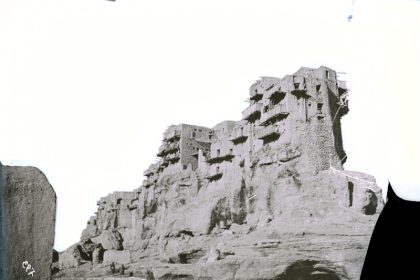The shrines and temples of Japan represent the country’s rich history and culture, and on the other hand, they symbolize the traditions, beliefs and spiritual values of this ancient nation. These temples, especially those that have developed and changed over the centuries, represent a mixture of Buddhism and Shinto, Japan’s two main religions. Each of Japan’s temples are not only known as places of worship and spiritual reflection, but also have their own unique architecture, natural scenery, and religious rituals. In the following, we will introduce 30 famous temples of the country.
Kiyomizu-dera – Kyoto
Kiyomizudera (清水寺, meaning “Temple of Pure Water”) is one of the most famous temples in Japan, its establishment dates back to 780, and its name is registered in the World Heritage List. One of the most important reasons for the popularity of this temple among tourists is its stage or wooden terrace, which you can go on from the main hall and at a distance of 13 meters from the ground and see a wonderful view of cherry and maple trees. Among the temple buildings are Okunoin Hall, Shaka and Amida Buddha Halls, Koyasu Pagoda, Jisho Temple and Zweigodo Hall.
– Visiting hours: 6:00 AM to 6:00 PM
How to get there: From Kyoto station, take a bus for 15 minutes to Kiyomizu-mechi station.

2. Fushimi Inari Taisha – Kyoto
Dedicated to the god of rice, Inari, this Shinto temple is famous for its thousands of red gates that make a beautiful path through the forest to the sacred shrine. The beautiful Fushimi Inari Mountain Trail not only provides visitors with opportunities to explore, but also makes for an exciting day out with beautiful restaurants and shrines around the temple.
– Visiting hours: 24 hours
How to get there: From JR Inari Station (5 minutes from Kyoto Station) or a short walk from Fushimi Inari Station.


3. Kinkaku-ji (Golden Temple) – Kyoto
During Japan’s Muromachi period, a two-story gold structure was built over a lake as a retirement villa for Shogun Ashikaga Yoshimitsu, and after his death, it became a Zen temple and what we see today. If you go to this temple, be sure to visit the nearby tea house and drink a cup of high-quality tea.
– Visiting hours: 9:00 am to 5:00 pm
How to get there: City bus from Kyoto station (40 minutes) or Karasuma subway line to Kitaoji station and then taxi or bus.

4. Ginkaku-ji (Silver Temple) – Kyoto
Built by Shogun Ashikaga Yoshimasa, contrary to its name, it was never covered with silver and is fortunately one of only two surviving from the temple fires. One of the reasons for the popularity of the Silver Temple is the sand and moss gardens around it.
– Visiting hours: 8:30 am to 5:00 pm
How to get there: bus number 5 or 17 from Kyoto station (35-40 minutes) or walk from Philosopher’s path.

5. Ryoan-ji – Kyoto
Riwanji Temple is home to Japan’s most famous stone garden. This magical garden has 15 stones and they are designed in such a way that one of the stones is always hidden from every viewing angle. Another attraction of this temple is a large park with a beautiful pond and wonderful walking paths.
– Visiting hours: 8:00 am to 5:00 pm
How to get there: Bus from Kyoto Station or walk from Kinkakuji Temple.

6. Todaiji (Todaiji) – Nara
One of the most important and famous temples in Japan and the most prominent historical attractions of Nara is Todaiji Temple, which was built in 752 as the main temple of all Buddhist temples in Japan. If we want to talk about the architecture of the building, we must say that the main hall of Todaiji held the record of the largest wooden structure in the world for a long time. This huge hall houses the largest bronze statue of Japan called Daibutsu, which is a sitting Buddha with a height of 15 with two bodhisattvas. It is interesting to know that in Todaiji there is a pillar with a hole at the bottom, which is the size of Daibutsu’s nostril, and passing through it means achieving enlightenment in the next life.
How to access:
Todaiji Temple is located in the north of Nara Park and is about 30 minutes’ walk from Kintetsu Nara Station and about 45 minutes from JR Nara Station. You can also reach the temple by bus from both stations. It is about a 5-10 minute walk from the Todaiji Daibutsuden bus stop to the main building.


7. Horyu-ji (Horyu-ji) – Nara
Horyūji Temple (法隆寺, Hōryūji) was built in 607 by Prince Shotoku and became one of the oldest temples in the country. This temple consists of 2 main parts: the western part (Sain Garan) and the eastern part (Twin Garan). The western part contains the oldest wooden structures in the world, including the central gate, the main hall, and the five-storied pagoda, which remained intact from the Asoka period. This temple reflects Japanese art; Upon entering through the central gate, you will see two statues of muscular Japanese guardian gods. Then, in the main hall of the temple, you will come across statues from the Asoka period…
How to access:
Horioji is located about 12 kilometers from the center of Nara.
By train: From JR Nara Station, take the Yamatoji Line to Horyuji Station (12 minutes, ¥230). From there, you can either walk for 20 minutes to the temple or you can take a bus to the temple (190 yen).
By bus: Take bus 98 to Horyuji-mae from JR or Kintetsu Nara stations (one hour, ¥770). A bus runs on this route every hour.

8. Byodo-in – Oji, Kyoto
This beautiful temple, which was originally the resting place of a powerful Japanese politician, is a clear and outstanding example of Buddhist architecture, which had a great influence on later temples. The most famous part of Beauvain is the Phoenix Hall, the reason for its name is the appearance of the hall with two Phoenix statues on its roof. This hall is one of the few wooden structures of the Heian period, which luckily still remains strong.
How to access:
Byodo-in is a 10-15 minute walk from JR Uji or Keihan Uji stations.

9. Sensoji (Senso-ji) – Tokyo
One of the most colorful and popular temples in Japan is Sensuji, which is also the oldest temple in Tokyo. If you intend to go to this wonderful building, you will first enter through the Thunder Gate, which is a symbol of Asakuya and Tokyo, pass through the Nakamise shopping street, and then at the end of the street, you will reach the main hall of the temple and the 5-story pagoda.
How to access:
Sensoji Temple is located a few steps from Asakusa Station, which is accessible by the Ginza and Asakusa Subway Lines and the Tobo Railway.
From Tokyo Station: Take the JR Yamanote Line to Kanda Station (2 minutes, 150 yen), then take the Ginza Subway Line to Asakusa (10 minutes, 180 yen).
From Shinjuku Station: Take the JR Chuo Orange Line to Kanda (10 minutes, ¥180) and then the Ginza Line to Asakusa (10 minutes, ¥180).

10. Meiji Jingu – Tokyo
One of the first emperors in modern Japan, who turned the country into one of the most important world powers, was Emperor Meiji. This emperor was so popular in Japan that a temple was built in his name and his wife’s memory.
During the New Year, this shrine receives more than 3 million visitors for Hatsumud prayers, and during the rest of the days, it often hosts traditional Shinto wedding ceremonies. Another attraction of the temple is its internal garden, which reaches its peak of beauty during the lily growing season, which is June.
How to access:
Meiji Temple is a few steps from Harajuku Station on the JR Yamanote Line or Meiji-jingu-mae Station on the Chiyoda and Fukutoshin Subway Lines.

Read more:
Japanese cities Full acquaintance
Essential travel information to Japan
11. To-ji – Kyoto

12. Toshogu Shrine (Toshogu) – Nice

13. Nanzen-ji Temple – Kyoto

14. Eikan-do Temple – Kyoto


15. Daigo-ji Temple – Kyoto

16. Tenryu-ji temple (Tenryu-ji) – Kyoto

17. Shitenno-ji (Shitenno-ji) – Osaka

18. Kencho-ji (Kencho-ji- Kamakura

19. Tsurugaoka Hachimangu (Tsurugaoka Hachimangu) – Kamakura

20. Engaku-ji (Engaku-ji) – Kamakura

21. Yakushi-ji temple – Nara

22. Kofuku-ji temple – Nara

23. Nikko Toshogu Temple – Nikko

24. Daikaku-ji temple – Kyoto

25. Great Buddha of Kamakura (Kamakura Daibutsu) – Kamakura

26. Chion-in Temple – Kyoto

27. Enryaku-ji temple (Enryaku-ji) – Mount Hiei, Kyoto

28. Zenkō-ji – Nagano

29. Itsukushima Shrine – Hiroshima

30. Mii-dera – Otsu, Shiga Prefecture

final word
Click to see the price and buy the Japan tour from Star Vank.
Buy a tour of Japan
Copying of the contents of Setare Vanak Airline Agency is prohibited only by mentioning the source.
RCO NEWS
















